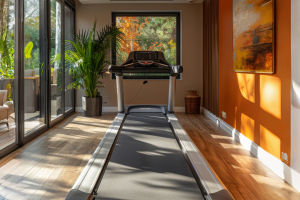A football stadium is the beating heart of the game, where passion, excitement, and the energy of the crowd come together to create unforgettable moments. Whether it’s the roar of fans or the excitement of a last-minute goal, the stadium is an integral part of the experience.
But what makes a football stadium stand out? Is it simply the size or location, or are there specific factors that turn a good stadium into a great one? In this guide, we’ll explore the key elements that make a football stadium exceptional, from its design and atmosphere to fan experience.
1. Spectator Experience: The Heart of the Stadium
The true spirit of a football match is felt in the stands, so providing an exceptional spectator experience is one of the most important features of any stadium. This includes several factors that ensure fans have a memorable time.
Seating Arrangement: The best stadiums provide clear views from all angles, ensuring that every fan has an unobstructed view of the game. Stadiums with tiered seating, rather than flat rows, allow for better sightlines, and the closer fans are to the field, the more intense the atmosphere becomes. Comfortable seating is another consideration, as long matches or extended time spent in the stands can affect fans’ comfort.
Atmosphere and Acoustics: A stadium’s atmosphere is vital for creating excitement. Well-designed acoustics help amplify the noise created by the fans, adding to the intensity of the game. The close proximity of the stands to the field also amplifies the crowd’s energy, turning a match into a full sensory experience.
Fan Zones and Concessions: Great football stadiums cater to the fans’ needs both before and after the match. Dedicated fan zones, merchandise shops, food courts, and even interactive areas provide fans with entertainment and comfort. The availability of high-quality food and beverage options, as well as easy access to restrooms, ensures that everyone is taken care of during their time at the stadium.
2. Design and Architecture: Aesthetics and Functionality
The design and architecture of a football stadium not only contribute to its visual appeal but also determine how efficiently it operates. A great stadium strikes a balance between aesthetics and functionality.
Modern, Functional Design: Today’s football stadiums are built with cutting-edge technology and modern design principles. From retractable roofs to customizable seating arrangements, the use of innovative materials and structures can transform the stadium into a multi-purpose venue, capable of hosting other events like concerts or tournaments. The design should also facilitate smooth movement for fans, making entrances and exits easily accessible to avoid congestion.
Sustainability Features: More and more, stadiums are being designed with sustainability in mind. Green building techniques, such as energy-efficient lighting, water-saving fixtures, and solar panels, are becoming common. A stadium that is environmentally conscious not only reduces its carbon footprint but also creates a more positive image in the community.
Iconic Architecture: An iconic and unique stadium design can contribute to a sense of pride in the club or city it represents. From the twisting exterior of the Allianz Arena in Munich to the futuristic design of the National Stadium in Beijing, the architecture can become an iconic symbol of the club or city, adding cultural significance to the venue.
In the world of football, the stadium is more than just a place to watch the game; it’s where memories are made. A great football stadium isn’t just about size or location; it’s about providing a phenomenal experience for the players and fans.

